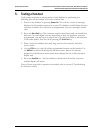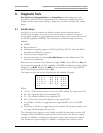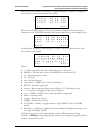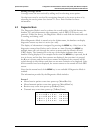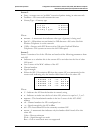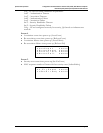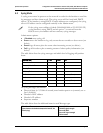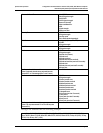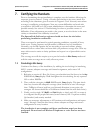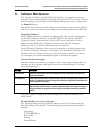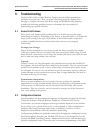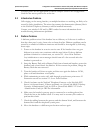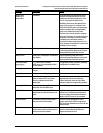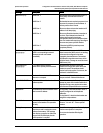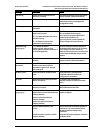
SpectraLink Corporation Configuration and Administration–NetLink e340/h340/ i640 Wireless Telephone
NetLink Telephony Gateway and SpectraLink Radio Protocol
PN: 72-1065-09-K.doc Page 37
7. Certifying the Handsets
Prior to determining that an installation is complete, test the handsets following the
sequence given in section 5
Testing a Handset
and conduct a site survey mode test
according to the directions given in section 6
Diagnostic Tools
. Note any areas where
coverage is conflicting or inadequate. Note any system difficulties and work with
your wireless LAN and/or LAN system administrator to determine the cause and
possible remedy. See section 9
Troubleshooting
for clues to possible sources of
difficulties. If any adjustments are made to the system, re-test the device in the same
vicinity to determine if the difficulty is resolved.
The SpectraLink field service engineer should not leave the site before
performing installation verification.
These tests must be performed in typical operating conditions, especially if heavy
loads occur. Testing sequence and procedure is different for every installation.
Generally, you should organize the test according to area and volume, placing
numerous calls to others who can listen while you perform coverage tests. Note any
areas with excessive static or clarity problems and report it to a SpectraLink service
engineer.
The coverage test will also require you to put the handset in Site Survey mode and
walk the entire coverage area to verify all access points.
7.1 Conducting a Site Survey
Conduct a Site Survey of the installation, by walking the site looking for interfering
802.11 systems, adequate coverage and channel assignment, and correct AP
configuration.
1. Referring to section 6.1
Run Site Survey
, put a handset into Site Survey in the Any
ESSID mode, Smry display. Walk throughout the site checking for any expected
APs or other ESSIDs.
2. Then, walk the site again, in MyID ESSID mode, Smry display. This time check
that every location has adequate coverage (there should be at one AP stronger
than -70dBm in all areas) and has good channel allocation (at any point, the
strongest AP shown should be on a different channel than the next best choice).
3. Finally, use the single AP (
MyID) and Detl display to check each AP, to ensure it
is configured for the proper data rates, beacon interval, 802.11 options enabled,
QoS method, and security method.
4. Make any necessary adjustments to AP locations and configurations and repeat
steps 1 through 3 until the Site Survey shows adequate coverage and correct
configuration at every location.
The installation is not complete until these certification steps have been
performed. Do not hand out Wireless Telephones at a site that has not been
certified.



